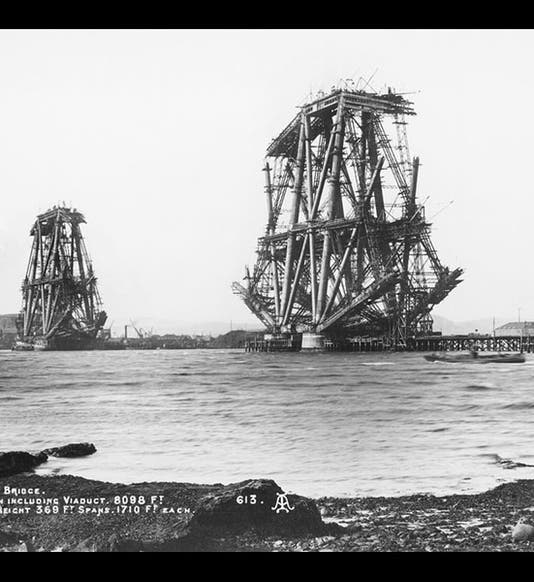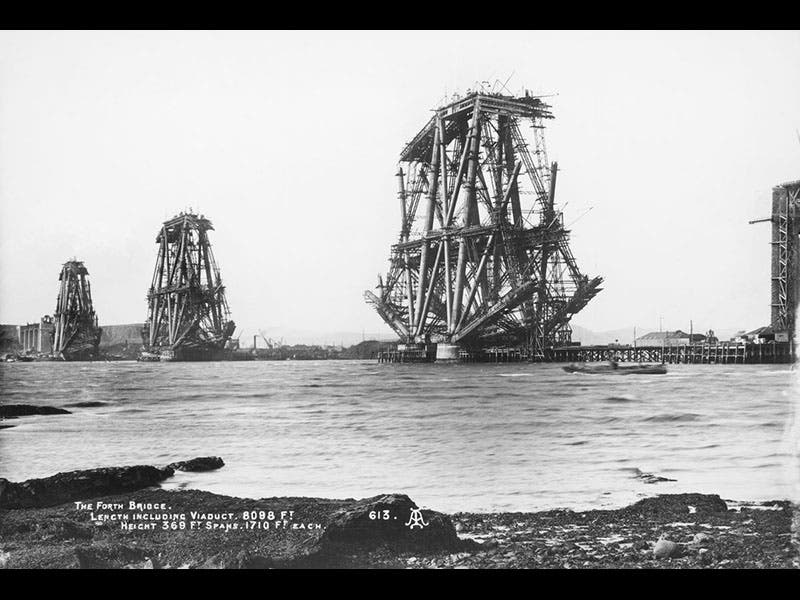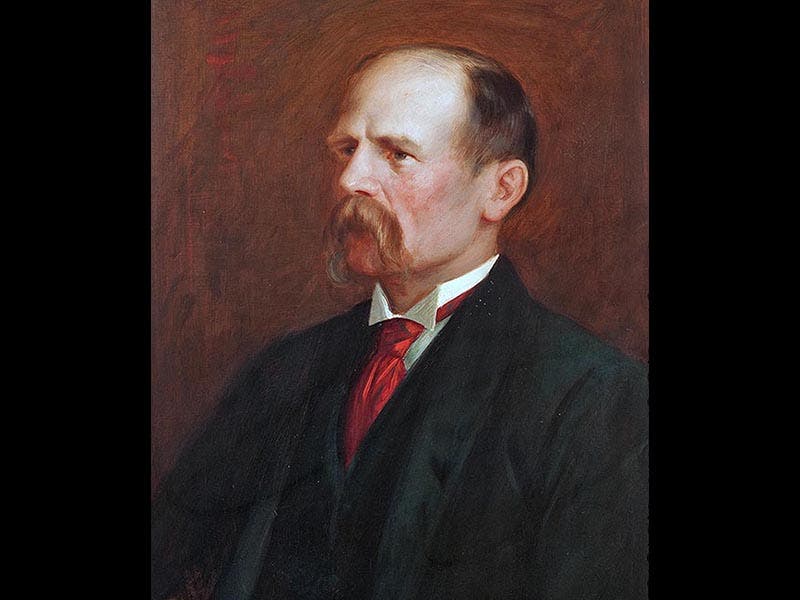Scientist of the Day - Benjamin Baker
Benjamin Baker, an English civil engineer, died May 19, 1907, at the age of 67. Baker designed the railway bridge over the Firth of Forth in Scotland. It was not the first cantilever bridge to be built, but it was certainly the longest, with two clear spans of 1700 feet each and trusses of tubular steel. The Tay bridge over the next forth up had collapsed in 1880, with considerable loss of life, so there was some concern over the structural integrity of the new Forth bridge. Baker demonstrated the cantilever principle by devising a living bridge, using three human subjects, for a lecture at the Royal Institution in London; it was dramatically effective and widely photographed (third image above). The line drawing behind the participants is an outline of the bridge, then under construction (first and fourth images).
The Forth Bridge was opened to the public on Mar. 4, 1890, by the Prince of Wales, who hammered in the last rivet. The bridge is still standing (fifth image), and still carries railway traffic--it is, in fact, a kind of Scottish national landmark. We featured the bridge in an exhibition of 2002, Centuries of Civil Engineering.
The portrait of Baker (second image), by James Coutts Michie, is in the collection of the Institution of Civil Engineers in London.
Dr. William B. Ashworth, Jr., Consultant for the History of Science, Linda Hall Library and Associate Professor, Department of History, University of Missouri-Kansas City. Comments or corrections are welcome; please direct to ashworthw@umkc.edu.











